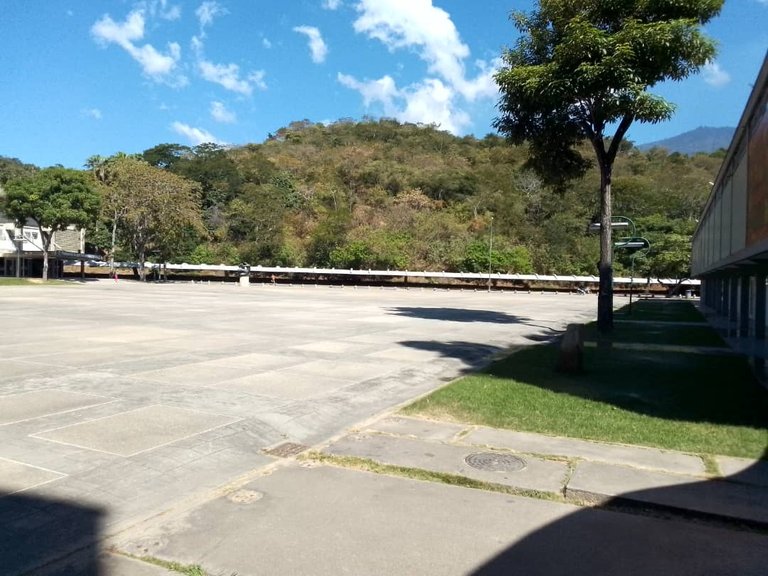Remembering The Central University Of Venezuela / Recordando a la Universidad Central de Venezuela
Remembering The Central University Of Venezuela
Recently several professionals of the Universidad Central de Venezuela made a meeting, during the event I met again with many friends, today professionals of the different careers offered by the university, and with whom I had lost contact. I went through moments of great nostalgia remembering with them my internship at the university campus, so we evoked the different facets lived in the academic, political, as a member of the Student Center of the School of Sociology and Anthropology and in the sports area to be a member of the basketball team of the Faculty of Economics and Social Sciences and the University Basketball team.
For the above mentioned and as a tribute to the Central University of Venezuela I decided to make this content in this interesting and important social networking platform, I decided to make a tour of the sites that were most significant for me during the years I was at the Central University of Venezuela, for this purpose I took as a reference a routine day of the many I had at the UCV.
The Central University of Venezuela was founded on December 22, 1721 under the mandate of King Philip V of Spain and was initially known as the University of Caracas. Today its main campus is located in the city of Caracas, Capital District of Venezuela, in what is known as the Ciudad Universitaria de Caracas and/or also as the Campus.
The design and architecture of the UCV in its current location was carried out by the architect Carlos Raúl Villanueva, who managed to harmoniously integrate architecture, art, and urban planning.
Masterpieces such as the aula magna, the Olympic Stadium, and the Rectorate's Covered Plaza can be observed in its territory. Another element that stands out in the University is the presence of artistic works made by internationally renowned authors such as: the “Clouds” by Alexander Calder in the aula Magna, Amphion by Henri Laures in the Plaza del Rectorado, Homage to Malevitch by Victor Vasarely which is a Bimural located in the Plaza Cubierta del Rectorado.
The university city of Caracas became part of the world heritage, since on December 2, 2001 UNESCO incorporated it as a world heritage site as it is a structure with a unique design that managed to combine the humanistic, social, cultural, architectural, urban and ecological in a single space.
Recordando a la Universidad Central de Venezuela
Recientemente varios profesionales de la Universidad Central de Venezuela hicimos un encuentro,durante el evento me reencontré con muchos amigos, hoy profesionales de las diferentes carreras que ofrece la universidad, y con los cuales había perdido contactos. pasé por momentos de mucha nostalgia recordando con ellos mi pasantía por el campus universitario, así evocamos las diferentes facetas vividas en lo académico, lo político, como miembro del Centro de Estudiante de la Escuela de Sociología y Antropología y en el área deportiva al ser integrante del equipo de baloncesto de la facultad de Ciencias Económicas y Sociales y de la selección Universitaria de baloncesto.
Por lo señalado anteriormente y como un homenaje a la Universidad Central de Venezuela he decidido realizar este contenido en esta interesante e importante plataforma de redes sociales,me planteé efectuar un recorrido por los sitios que fueron más significativos para mí durante los años que estuve en la Universidad Central de Venezuela, para tal fin tomé como referencia un día rutinario de los tantos que tuve en la UCV.
La Universidad Central de Venezuela fue fundada el 22 de diciembre de 1721 bajo el mandato del rey Felipe V de España y fue conocida, inicialmente, como la Universidad de Caracas. En la actualidad su sede principal se encuentra en la ciudad de Caracas, Distrito Capital Venezuela, en lo que se conoce como la Ciudad Universitaria de Caracas y/u también como el Campus.
El diseño y arquitectura de la UCV en su sede actual fue realizado por el arquitecto Carlos Raúl Villanueva quien logró integrar de manera armoniosa la arquitectura, el arte, y el urbanismo.
En su territorio se observan obras maestras como el aula magna, el estadio Olímpico, la Plaza Cubierta del Rectorado. Otro elemento que destaca en la Universidad es la presencia de obras artísticas realizadas por autores de renombre internacional Como: las “Nubes” de Alexander Calder en el aula Magna,Amphión de Henri Laures en la Plaza del Rectorado, Homenaje a Malevitch por Victor Vasarely que es un Bimural ubicado en la Plaza Cubierta del Rectorado.
La ciudad universitaria de Caracas pasó a engrosar el patrimonio de la humanidad, ya que para el 2 de diciembre de 2001 la UNESCO la incorpora como patrimonio mundial al ser una estructura con un diseño único que logró combinar lo humanístico, social, cultural, arquitectónico, urbanístico y ecológico en un solo espacio.
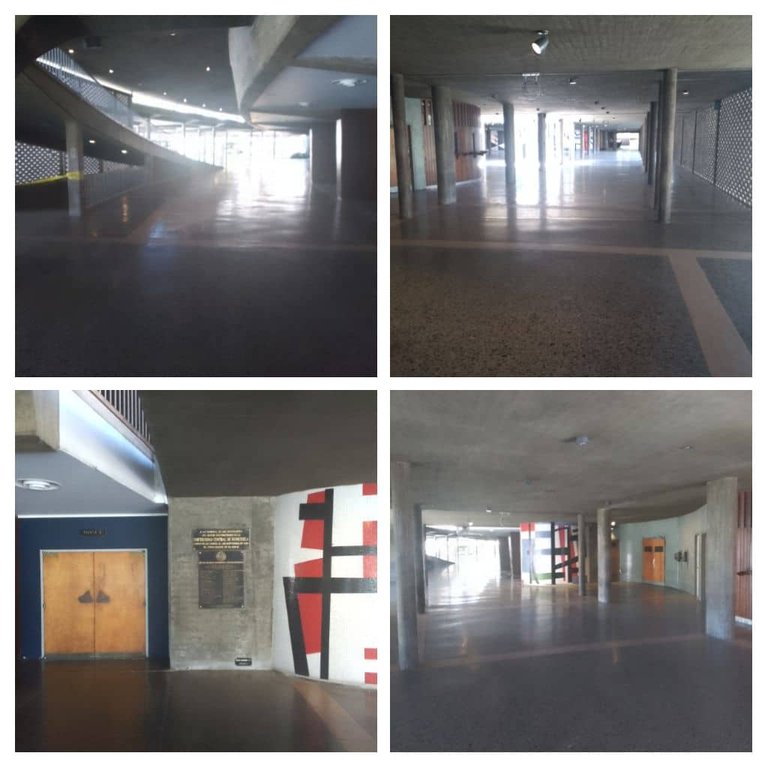
The Central University of Venezuela is a museum: it has a striking set of works that invite you to visit it from any of the dimensions we mentioned above (humanistic, social, cultural, architectural, urban, sports and ecological), which makes it, without a doubt, an artistic and architectural museum under the open sky. Thank God I enjoyed these great works on a daily basis.
In the tour that I have proposed to myself we will see these spaces, without forgetting that they were of great significance for me, the tour will be done remembering how was my daily routine in the House that Overcomes the Shadow, from the entrance to the university in the morning until my departure from it, daily ..... Let's get into action.
La Universidad Central de Venezuela es un museo: tiene un conjunto llamativos de obras que invitan a visitarla desde cualquiera de las dimensiones que señalamos anteriormente (humanístico, social, cultural, arquitectónico, urbanístico, deportivo y ecológico), lo cual la convierte, sin duda alguna, en un museo artístico y arquitectónico a cielo abierto. Gracias a Dios a diario disfruté estas grandes obras.
En el recorrido que me he planteado veremos estos espacios, sin olvidar que fueron de gran significación para mi persona, el recorrido lo realizaré recordando cómo era mi rutina diaria en la Casa que Vence la Sombra, desde la entrada a la universidad en la mañana hasta mi salida de ella, diariamente….. Pongámonos en acción.

Access to the university campus was normally through the arch of the main entrance of the Central University of Venezuela, known as Puerta Tamanaco, which is an emblematic structure of the campus. It is located near the Botanical Garden. This arch was part of the original design of the university city by the architect Carlos Raúl Villanueva.
El acceso al recinto universitario normalmente lo realizaba por el arco de la entrada principal de la Universidad Central de Venezuela, conocido como Puerta Tamanaco, que es una estructura emblemática del campus. Está ubicado cerca del Jardín Botánico. Este arco fue parte del diseño original de la ciudad universitaria realizado por el arquitecto Carlos Raúl Villanueva.
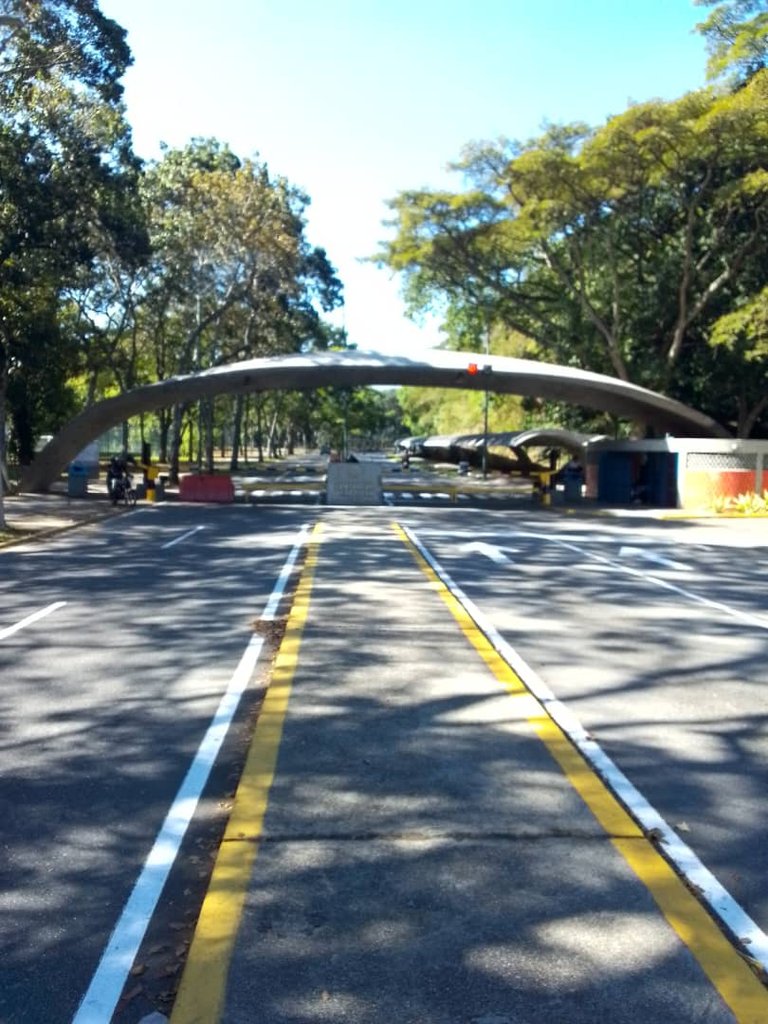
On my daily journey as a university student I went to the Faculty of Economic and Social Sciences known as FACES, the faculty's headquarters building, on the sixth and seventh floors, was the school of Anthropology and Sociology.
On my daily journey as a university student I went to the Faculty of Economic and Social Sciences known as FACES, the building where the faculty was based, on the sixth and seventh floors, was the School of Anthropology and Sociology.
En mi periplo diario como universitario me dirigía a la Facultad de Ciencias Económicas y Sociales conocida como FACES, el edificio sede de la facultad, en los pisos seis y siete, se encontraba la escuela de Antropología y Sociología.
On my daily journey as a university student I went to the Faculty of Economic and Social Sciences known as FACES, the building where the faculty was based, on the sixth and seventh floors, was the School of Anthropology and Sociology


University Dining Hall: On a daily day, at about half past six in the morning we had breakfast at the UCV dining hall, then at 11:30 am we had lunch and at about 5 pm we had dinner.
Then I went to take classes at the School of Anthropology, and in the second semester I saw classes at the school of sociology and the school of Anthropology.
Comedor Universitario: En un día cotidiano, a eso de las seis y media de la mañana desayunábamos en el comedor de la UCV, luego a las 11 y 30 de la mañana almorzábamos y a eso de las 5 pm cenábamos.
Luego iba a recibir clase en la Escuela de Antropología, ya en el segundo semestre veía clases en la escuela de sociología y en la escuela de Antropología
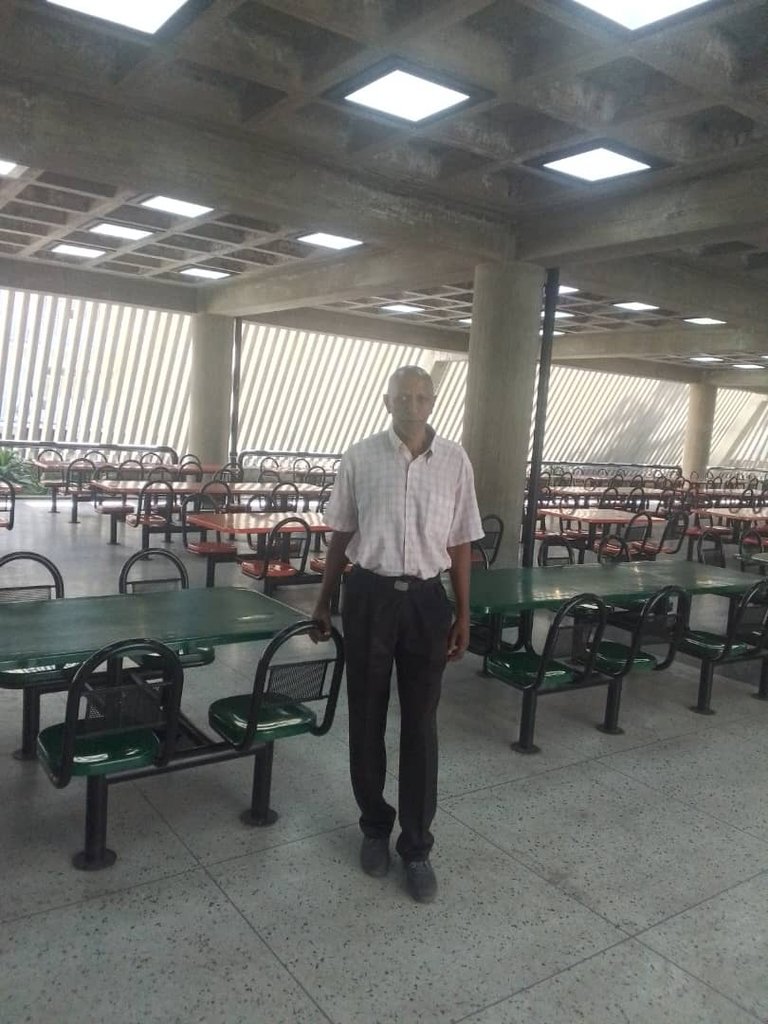
Covered walkways: Designed by architect Carlos Raúl Villanueva, they are a masterpiece of modern architecture, extending 1,428 meters, and were made to further enhance the beauty of the university. These corridors make it easy to move from one place to another in the university. The corridor that I present here is the one I used to walk daily from the main building of the School of Economics and Social Sciences to the School of Anthropology and to the university dining hall.
In my routine I usually went to the Olympic swimming pool at noon as a way to rest and to observe the sports activities that took place there, such as swimming, judo, table tennis, fencing, Olympic wrestling, karate and gymnastics.
Pasillos Cubiertos: Diseñados por el arquitecto Carlos Raúl Villanueva, son una obra maestra de la arquitectura moderna, estos se extiende a lo largo de 1.428 metros, fueron hechos para resaltar aún más la belleza de la universidad. Estos pasillos facilitan el traslado de un sitio a otro de la universidad. El pasillo que presento lo recorría a diario desde el edificio sede de la Facultad de ciencias Económicas y Sociales hasta la Escuela de Antropología y hacia el comedor universitario.
En mi rutina normalmente me dirigía en horas del mediodía a la piscina olímpica como una forma de descanso y a observar las prácticas de las actividades deportivas que se desarrollaban allí que eran natación, judo, tenis de mesas, esgrima, lucha olímpica, karate, gimnasia.
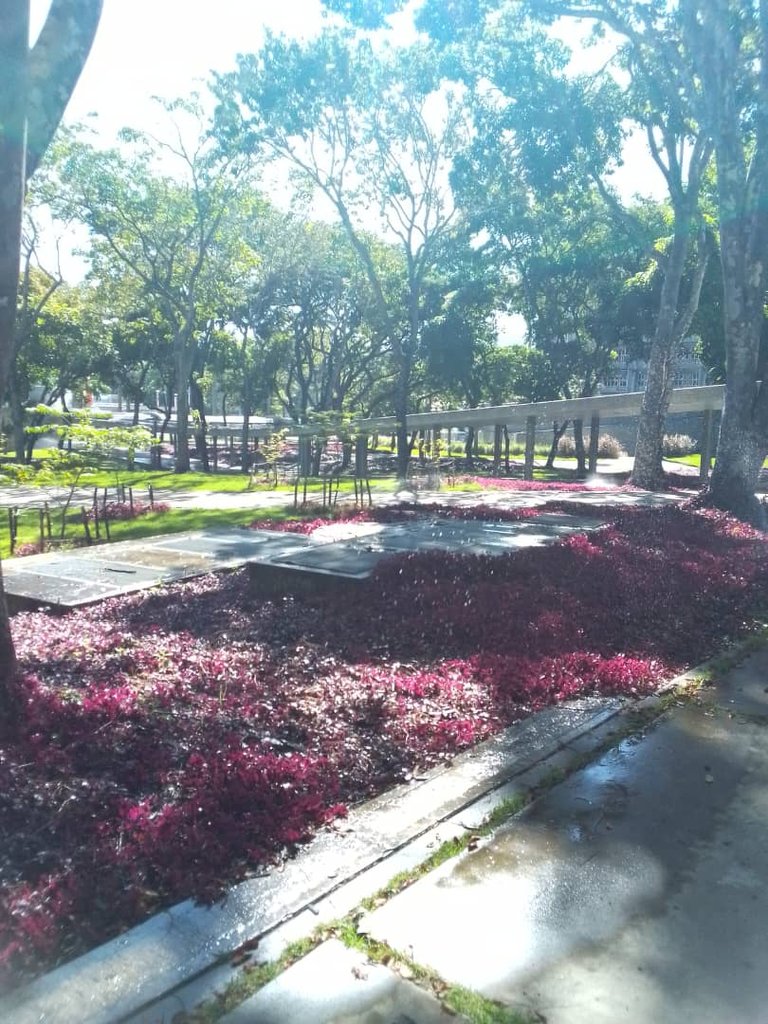
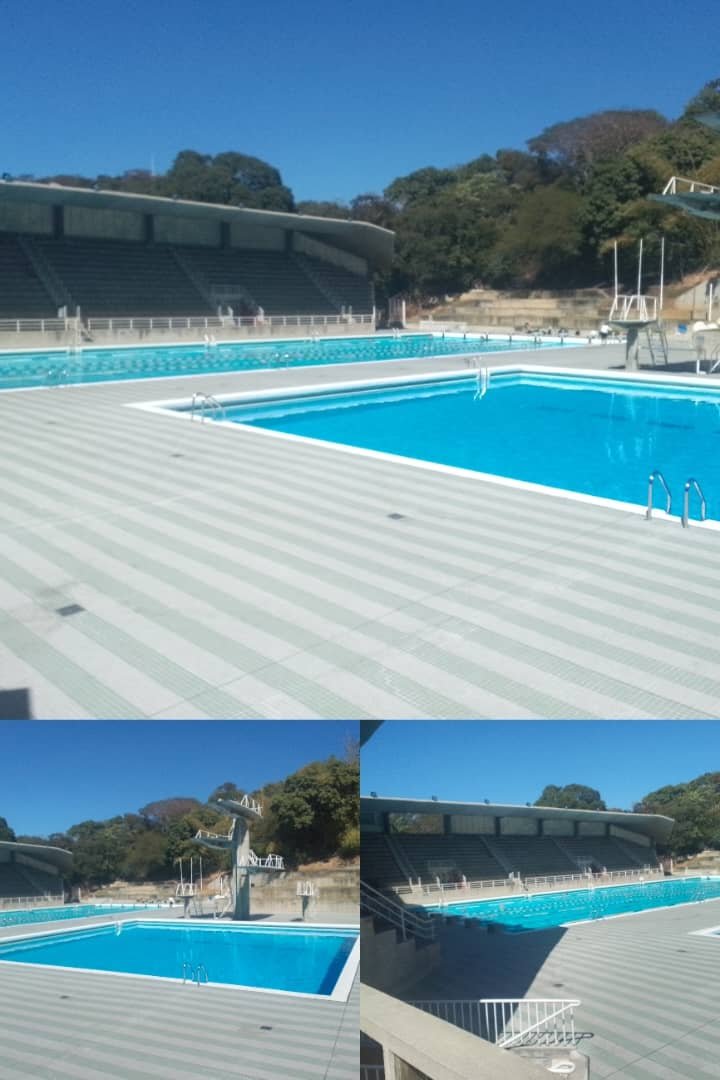
UCV Indoor Gymnasium: On Mondays, Wednesdays and Fridays at six o'clock in the afternoon I trained in the indoor gymnasium, also known as the “cachucha”, since its roof resembles a military cap. He trained and played in this place, because he was a highly competitive athlete and as such he was part of the basketball team of the UCV.
Olympic Stadium of the UCV: The UCV has several sports fields, including the Olympic Stadium, this stadium has hosted major sporting events such as the Bolivarian Games of 1951, the Pan American Games of 1983, the Copa America 2007. In this stadium I got to practice athletics in high jump, but often made middle-distance races, various physical exercises at noon in the afternoons.
Gimnasio Cubierto de la UCV: Los días lunes, miércoles y viernes a las seis de la tarde entrenaba en el gimnasio techado, conocido también como la cachucha, ya que su techo se asemeja a una gorra militar. Entrenaba y jugaba en este recinto, debido a que era un atleta de alta competencia y como tal integraba la selección de baloncesto de la U.C.V.
Estadio Olímpico de la UCV: La UCV cuenta con varias canchas deportivas, incluyendo el estadio Olímpico, este estadio ha sido sede de importantes eventos deportivos como los Juegos Bolivarianos de 1951, los Juegos Panamericanos del año 83, la Copa América 2007. En este estadio llegué a practicar atletismo en salto alto, pero frecuentemente hacia carreras de medio fondo, diversos ejercicios físicos en horas del mediodía en las tardes.
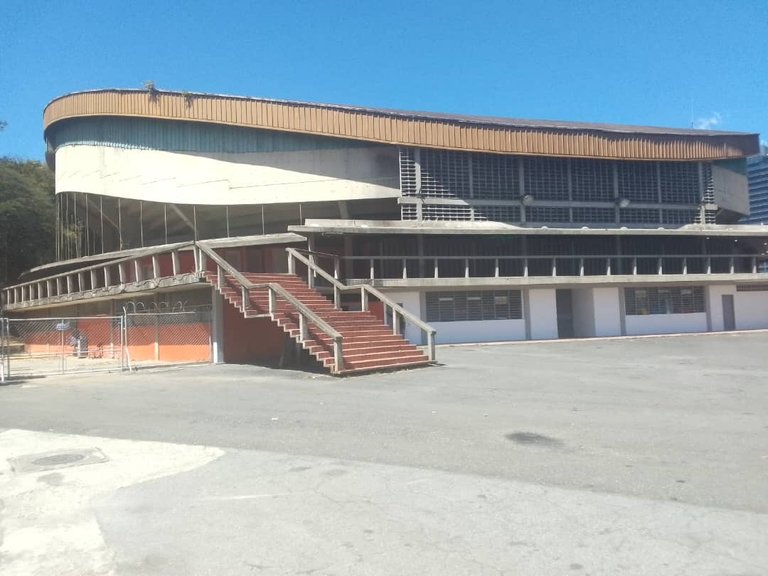
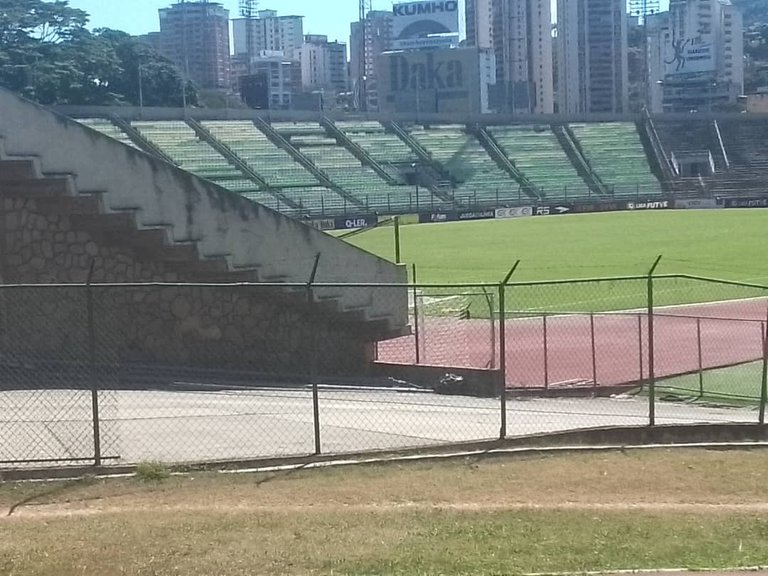
The Aula Magna: famous for Calder's clouds, it was an area that we visited frequently, since symphonic orchestras and different cultural events were presented there, as well as student assemblies. On Mondays, the Cátedra del humor was presented there. These events have been resumed after some time without taking place.
Covered Plaza of the Central University of Venezuela:** In the spaces where the main lecture hall is located, you can see the covered plaza, in these areas we used to meet with our classmates to study, discuss and change the world like any other young person.
El Aula Magna: famosa por las nubes de Calder constituía un área que visitábamos con frecuencia, ya que allí eran presentadas orquestas sinfónicas y diferentes eventos culturales y también se hacían las asambleas estudiantiles. Allí se presentaba los lunes la Cátedra del humor. Estos eventos luego de un tiempo sin realizarse se han retomado.
Plaza Cubierta de la Universidad Central de Venezuela: En los espacios donde se encuentra el aula magna se observa la plaza cubierta, en estas áreas nos reuníamos con los compañeros y compañeras a estudiar, discutir y a cambiar el mundo como todo joven.


Central Library: for us students, professors, researchers and the university community in general, the Central Library was a key support resource. There we reviewed books, encyclopedias, maps, degree theses, etcetera and attended different training activities such as conferences, exhibitions, etcetera this area was a valuable resource in our training process.
Biblioteca Central: para nosotros los estudiantes, profesores e investigadores y la comunidad universitaria en general la Biblioteca Central era un recurso clave de apoyo. Allí revisábamos libros, enciclopedias, mapas, tesis de grados, etcétera y asistíamos a diferentes actividades de formación como conferencias, exposiciones, etcétera esta área era un recurso valioso en nuestro proceso de formación.

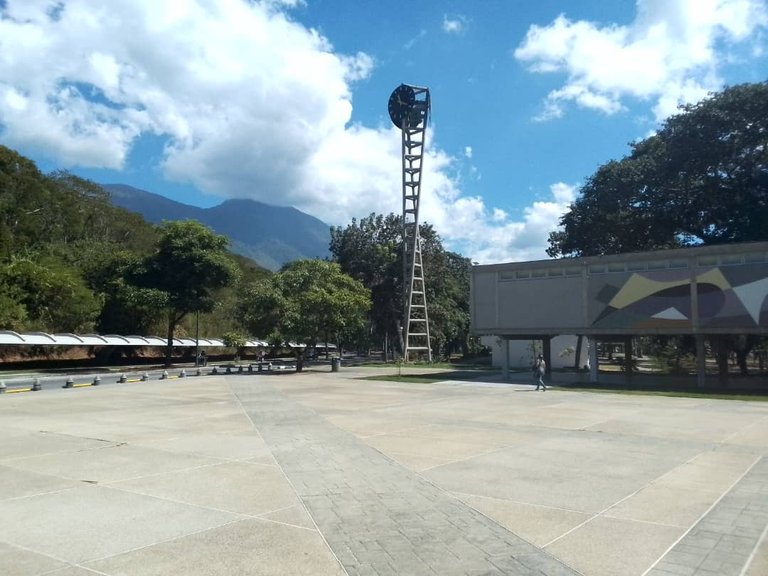
No Man's Land: In this space we met to study, to analyze the reality of the country. We also received classes on some occasions and participated in parties and recreational events. No Man's Land was a reference in politics, in the student conflict and also had a romantic connotation, couples met in this area to love each other.
Plaza del Rectorado: from here we took the university buses to return to our homes. This square has had a great significance over the years and has been the scene of important events and student demonstrations, becoming a symbol of values, promotion of the spirit present in all university students and identity of the UCV.
Tierra de Nadie: En este espacio nos reuníamos para estudiar, para analizar la realidad del país. También recibimos clases en algunas ocasiones y participamos en fiestas y eventos de esparcimientos. Tierra de nadie era una referencia en lo político, en la conflictividad estudiantil y también tenía una connotación romántica las parejas se reunían en esta área para amarse.
Plaza del Rectorado: desde acá tomábamos, los autobuses de la universidad para el retorno hacia nuestros hogares. Esta plaza ha tenido un gran significado a lo largo de los años y ha sido escenario de importantes eventos y manifestaciones estudiantiles, convirtiéndose en un símbolo de los valores, de promoción del espíritu presente en todo universitario y de identidad de la UCV.

